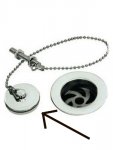Would temperature be likely to overshoot anyway? Where's the inertia?
I'm sure your regular kitchen oven has no PID control and has a simple thermostat - do they tend to overshoot?
Cheers
JohnO
The 'inertia' is the time lag between heater and object being heated.
Domestic ovens overshoot dramatically. That is why most recipes state "place in a pre-heated oven". It's not so much so that temperature has been reached but that excessive temperature will not be experienced.
@Andrew & Hippy.
A PID temperature controller can be tuned for ZERO overshoot.
PID explained (again).
P = Proportional. This is the amount of power applied which is proportionall to how far away you are from the desired setpoint.
I = Integral. This is the sum (over time) of the errors. That is, a gradual increas in power. The amount of each increase being proportional to how far you are away from setpoint. This term keeps increasing all the time there is an error and is the part which eventually ensures ZERO error.
D=Derivative. This is also a time related term. It is rate at which you are approaching the setpoint. It works AGAINST the other two terms. If you are approaching setpoint quickly, this term will reduce the power to slow things down. It makes the system stable and is used to prevent overshoot. It is often left out of many controllers where overshoot can be tollerated.
A simple "on if it's under" and "off if it's over" type controller is a PID controller where P=infinity, I=zero and D=zero.
A controller which puts out an amount of power proportional to how far off is the next step up. However, this type of controller will NEVER quite reach the required setpoint because when the error comes down to zero, so does the power.
An integral only controller keeps adding a little more power until setpoint is reached. This type of controller will ALWAYS OVERSHOOT because the power will not be reduced until it HAS overshot.
I am not aware of any derivative only controllers and cannot think of any use for one. The closest I can think of is a car shock absorber. The derivative term's function is to resist change. ie dampen. Even in that example, it works together with the suspension which is a proportional control.
Even a simple bi-metallic type control with several degrees of hysterisis can be made to control to within less than a dgree with a simple mod. It's called an "accellerator resistor" and is used by many domestic heating systems to make them look like PID controllers.
The "accellerator resistor" heats up the bi-metallic sensor making it trip early. If the environment is cold, it will cool down quickly and come back on. If it's warm, it will stay off longer. The result is a much closer and finer temperature control than can be achieved with the sensor alone.
Hope this explains PID and simple controls for those interested.

